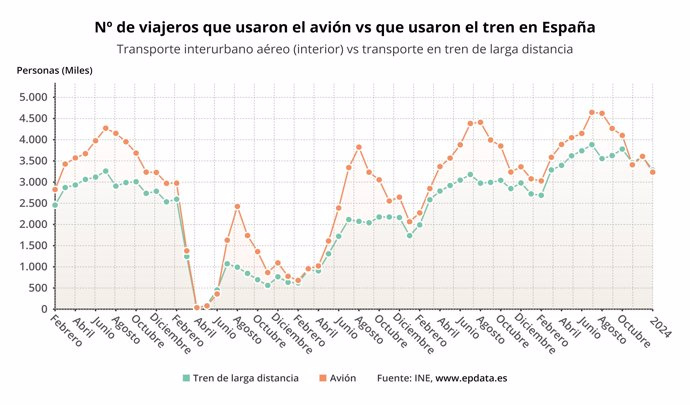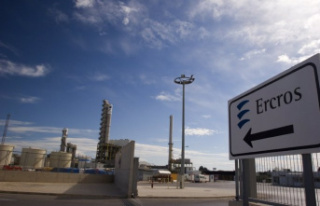Air transport grows 5.1%, exceeding 3.2 million in January
MADRID, 11 Mar. (EUROPA PRESS) -
The liberalization of rail transport has boosted the number of train trips in Spain, especially through high speed, which has increased the number of passengers by 26.5% in the month of January, reaching close to 2.6 million passengers. according to the Passenger Transport Statistics made public that Monday by the National Statistics Institute (INE).
More than 444.1 million passengers used public transport during the first month of the year, 13.6% more than in the same month of 2023, according to data from the Spanish statistical institute, which especially highlights the significant increase registered in movements. by rail in our country.
By segment, urban transportation increased by 15.1% in annual rate and interurban transportation by 12.9%. Within the intercity, the increase of 18.3% in bus transport stood out, as well as 20.7% in long-distance rail.
Data from the INE released this Monday show how urban transport was used in Spain by more than 280.4 million travelers last January. Transportation by metro increased by 10.7% in annual rate and urban transportation by bus by 18.4%.
For its part, intercity transport was used by 125.4 million passengers, which represents a growth of 12.9% compared to the same month in 2023. By type of transport, by bus it grew by 18.3%, by rail 7.5% and air 5.1%.
In the case of rail transport, suburban transport grew by 6.3% to 47.1 million, medium distance transport by 12.8% to 3.6 million, while long distance transport grew by 20.7% to exceed the 3.2 million.
High speed was the one that grew the most with an increase in the number of passengers of 26.5% to exceed 2.58 million passengers.
In the case of air transport, peninsular travelers increased by 6.9% to 1.2 million, peninsular travelers with the rest of the territories increased by 3.8% to 1.5 million, while inter-island travelers increased by 4.6 % up to 417,000 passengers last January.
More than 38.2 million users used special and discretionary transportation last January in Spain, which represented an increase of 5.7% in the annual rate, according to data from the statistical institute.
The number of passengers on special transport increased by 5.5% and exceeded 29.0 million users. Within this, school education increased by 7.5%, while labor education fell by 1.1%. For its part, discretionary transportation grew by 6.3% compared to the same month in 2023, with more than 9.1 million travelers.
All autonomous communities presented positive annual rates in bus transportation. The largest increases occurred in the Region of Murcia (41.4%), the Canary Islands (27.1%) and Extremadura (25.8%), compared to the Basque Country (7.6%), Galicia (11.9%). and Aragón (15.5%) that recorded the smallest increases.
Regarding metro transportation, this increased in all cities that have this type of transportation compared to the same month of the previous year. The Málaga metro presented the greatest increase, of 109.3%, and that of Madrid the smallest, of 8.2%.













